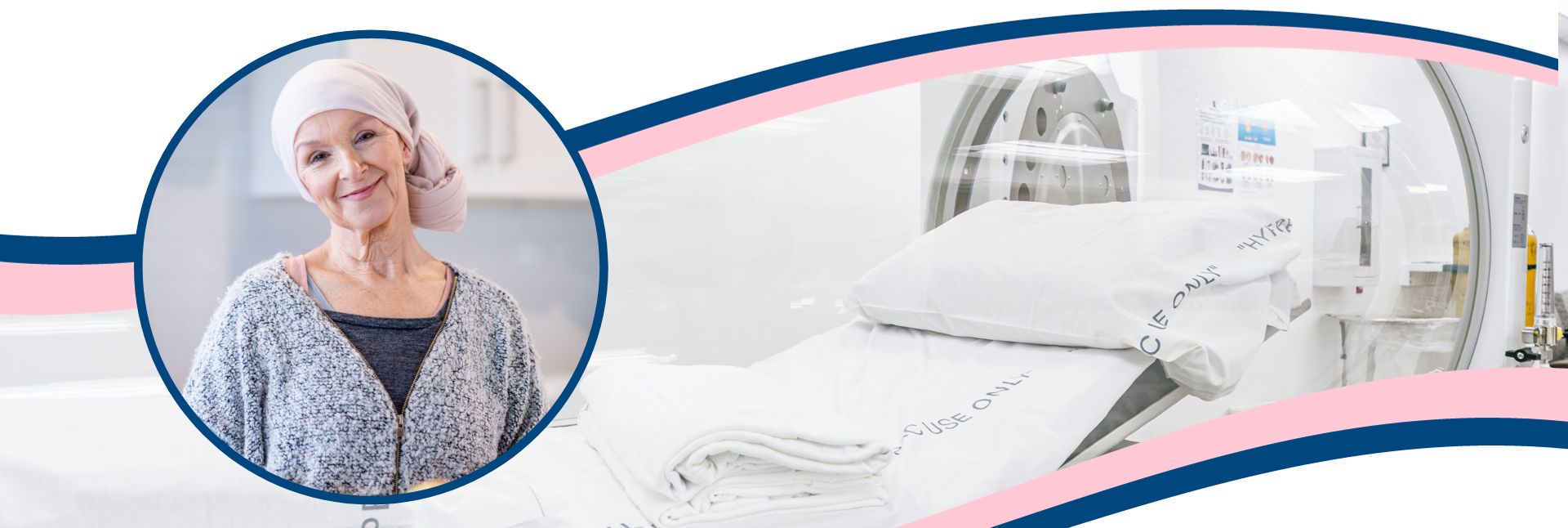HBOT Following Radiation Therapy for Optimal Patient Outcomes

October is breast cancer awareness month.
Approximately one in eight women will develop some type of breast cancer in their lifetime, accounting for one out of every four cancer diagnoses in women in the U.S. each year.
Throughout the course of their treatment, many breast cancer patients will undergo a mastectomy and/or breast reconstruction, in addition to radiation therapy. Both of which can have devastating side effects.
There is no contesting that radiation therapy is a safe and effective cancer treatment, used to treat approximately 50%-60% of all people, including breast cancer patients, diagnosed with cancer at some point during their care.
However, there can be significant side effects, known as the late effects of radiotherapy for breast cancer patients. Radiation can cause hypocellularity and hypovascularity in tissue. This can lead to reduced perfusion, stiffness, and tissue that is less tolerant of injury overall. These injuries can also be exacerbated by surgeries and procedures, including mastectomy and breast reconstruction.
In the words of Dr. Enoch Huang, Medical Director for Hyperbaric Medicine and Chronic Wound Care, Legacy Emanuel Medical Center, Portland, OR:
Modern radiation treatments are designed to minimize this collateral damage, but cancer survivors often develop skin and wound-related complications in areas that have been irradiated, 6-months or more–sometimes years–after radiation. Additionally, surgery in a previously irradiated field has a higher likelihood of poor wound healing.
In addition, a notable 30% of patients who have undergone a mastectomy and/or breast reconstruction develop a partial loss of skin flap viability. However, when administered following a mastectomy and preceding breast reconstruction, HBOT facilitates the restoration of blood vessels within irradiated tissue, prompting it to return to its inherent state and regain vitality.
By providing increased oxygenation to tissues, it may play a critical role in salvaging threatened breast skin, which can preserve the final aesthetic outcome and prevent delays in adjuvant therapy. A skin-sparing mastectomy removes all breast tissue, along with the nerves and blood vessels that run through the breast parenchyma, and preserves the overlying breast skin. Because of this, the remaining breast skin experiences a significant reduction in blood flow. Sometimes the blood flow is reduced too much for skin survival, leading to skin loss or mastectomy flap necrosis – cell death in the injured tissue.
In honor of National Breast Cancer Awareness Month, the team at CūtisCare wanted to let breast cancer patients know that there are CMS-approved, effective treatments available, and HBOT is one of them.
Every year, our team of dedicated doctors, healthcare professionals, and administrators recognize October as a special month, along with healthcare organizations all over the world.
As the Susan G. Komen organization points out:
For nearly four decades now, the country has recognized October as National Breast Cancer Awareness Month. It is a time annually devoted to educating everyone about breast cancer — including metastatic breast cancer (MBC) — and the importance of early detection and access to timely, high-quality care.
We couldn’t agree more. And using HBOT as an early treatment as part of a comprehensive team, for patients struggling with chronic wounds from radiation therapy, can be a game-changer.
HBOT is a medical treatment that involves breathing pure oxygen in a pressurized environment. Under these conditions, the lungs can gather much more oxygen than would be possible breathing pure oxygen at normal air pressure.
As the blood carries higher levels of oxygen to tissue throughout the body, it fights bacterial growth and stimulates the release of growth factors and stem cells. This process promotes healing and can even reverse some of the effects of chronic wounds in irradiated tissue.
Breast wound care management and hyperbaric oxygen therapy solutions provide proven treatments designed to:
- Improve your patient’s quality of life
- Treat Chronic Radiation Tissue Injury (CRTI)
- Treat Soft Tissue Radionecrosis (STRN)
- Reduce infections and tissue necrosis
- Increase healing for women after mastectomy and during breast reconstruction
Do you have questions about wound care and hyperbaric medicine for non-healing wounds caused by the late effects of radiation and other chronic wounds?
Wherever you’re at in your wound care treatment journey, we’d love to share our 25 years of knowledge and experience with you. Get in touch with one of our HBOT thought leaders today.
